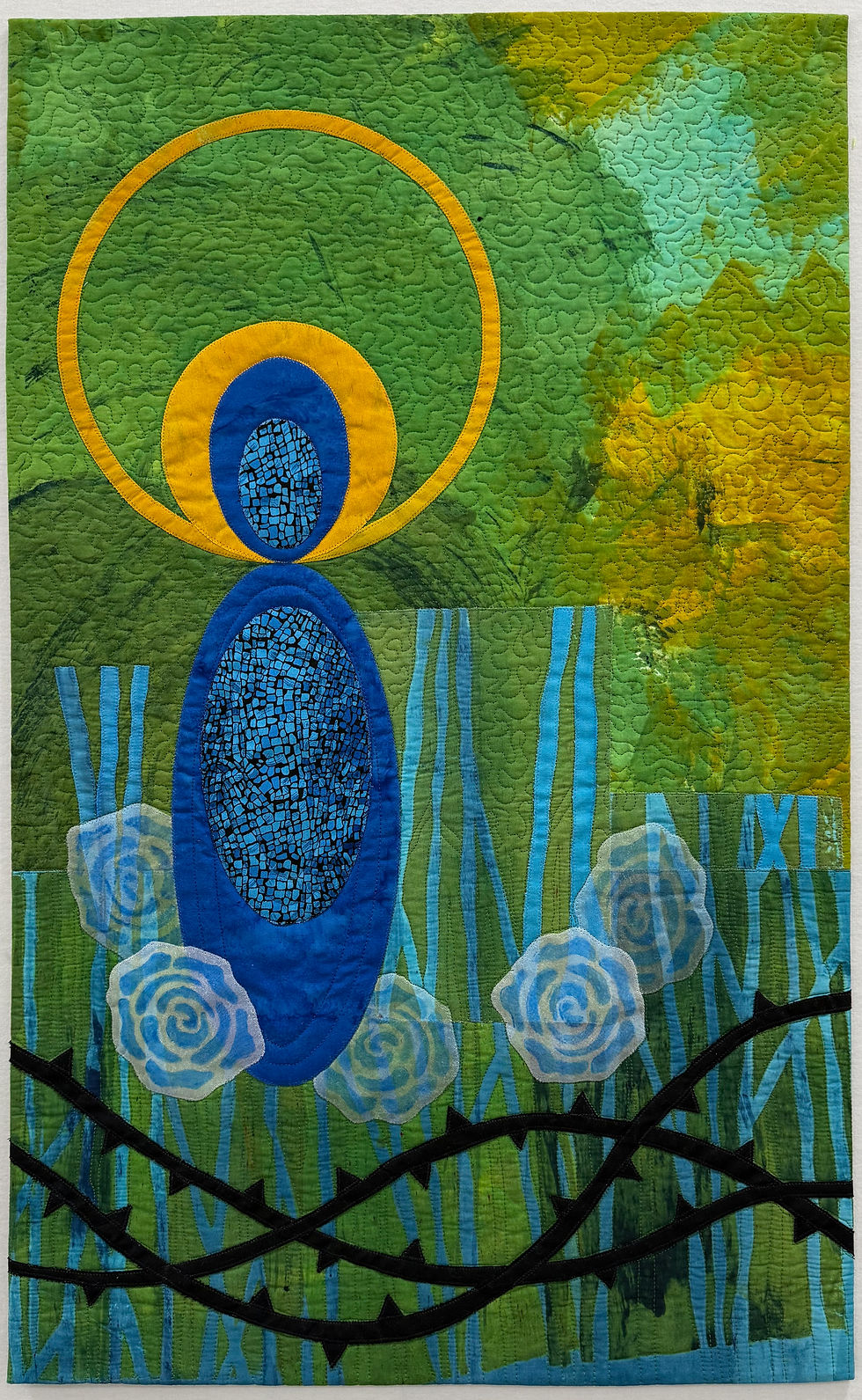Over and under - Allison James
- Allison James
- May 24, 2022
- 2 min read
The Holme Valley, where I live in the UK, has a long history of textile production with two main types of woolen cloth being traditionally woven in this area. The first was a heavy woolen cloth called Kersey, used for outer garments and uniforms, with the second being a much finer, twilled woolen cloth - Cassimere or Kerseymere – that often had silk incorporated into the weave.
Traditionally, this cloth was produced at home: the raw fleece would be washed and spun, before being woven into cloth on a handloom. These processes would be carried out in the top rooms of the weavers’ cottages, that were constructed with many small windows to maximise the light. However, by the early 1800s , the invention of different kinds of machinery, that could quickly process the raw materials into cloth, saw a shift away from homeworking. The weavers sought better paid work in the many mills that were quickly established in the valley bottom, powered by the river that runs through it. By the turn of the century there were about 30 mills operating in the valley. Today, however, there are no textiles produced here – the mills have been demolished and turned into car parks or housing estates or, in some cases, have been left derelict, awaiting a 21st century repurposing.
But although textiles are no longer produced in the valley, there remain some important signs of this history of textile production here. First, are the mill races and mill ponds that dot the landscape; second are the many footpaths that track across and down the steep hillsides, paths that the millworkers living in the scattered homsteads would walk each day to work; and third are the weavers’ cottages known locally as ‘over and under’ houses.
It is these ‘ over and under houses’ that have inspired my piece, for they have a very distinctive architecture that provides a window or portal into this fascinating history. The buildings are four storeys tall, set into the steep hill side so that one weavers’ cottage sits on top of another: the ‘over’ house is accessed up the hill, while entry to the ‘under’ house is from the street. Yet each cottage has a distinctive row of small windows that let daylight into the upstairs weaving room.

(32.5 inches x 22 inches)
The background fabric is my own screen printed fabric, onto which I have appliqued black windows and doors. In some of the windows I have put a small piece of woven cloth –offcuts of suiting fabric I found in a local market. In the other windows I have interwoven thin strips of fabric to represent the weaving process itself. The piece is finished with free machine quilting.




Comments